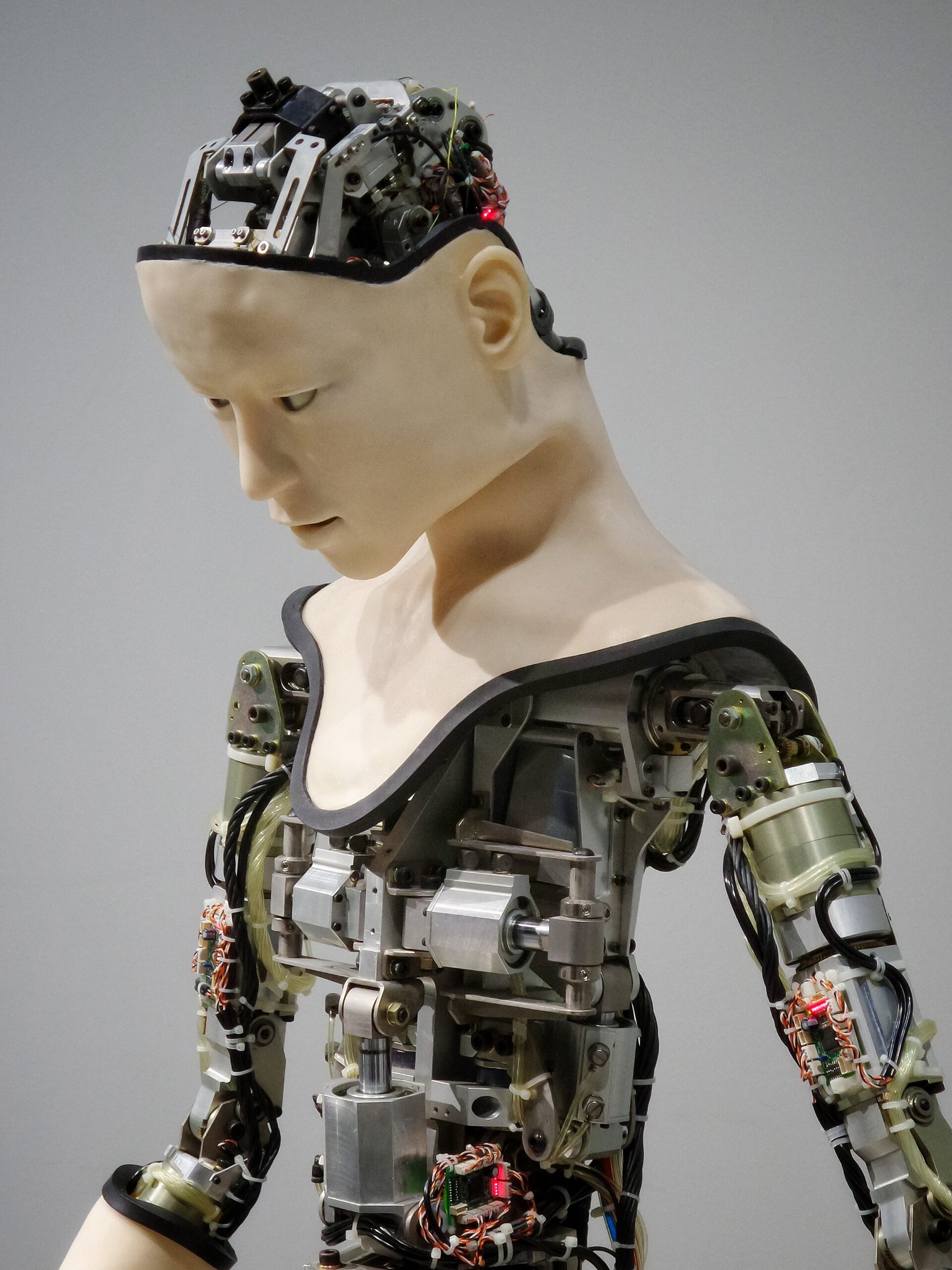
Imagine a future where machines possess a level of intelligence that rivals our own. While this may sound like the plot of a science fiction movie, the reality is that Artificial Intelligence (AI) is rapidly advancing. From driverless cars to virtual assistants, AI has already begun to shape our daily lives. However, as we embrace the potential of this technology, it is crucial to consider the potential risks. In this article, we will explore the potential dangers of AI and why it presents a critical challenge for our society. Brace yourself, as we delve into the dark side of this emerging technology.
Artificial Intelligence (AI) Overview
Artificial Intelligence (AI) is an ever-evolving field that aims to create intelligent machines capable of mimicking human cognitive processes. It involves the development of computer systems that can perceive their environment, reason, learn, and make decisions. AI has the potential to revolutionize numerous aspects of our lives and society, but it also comes with its fair share of concerns and risks.
Definition of AI
AI refers to the simulation of human intelligence in machines that are programmed to think and learn like humans. It encompasses various technologies, such as machine learning, natural language processing, computer vision, and robotics. The goal is to create systems that can perform tasks that typically require human intelligence, including speech recognition, problem-solving, decision-making, and pattern recognition.
Types of AI
There are two main types of AI: Narrow AI (also known as weak AI) and General AI (also known as strong AI). Narrow AI focuses on a specific task, such as language translation or image recognition, while General AI aims to possess the ability to understand, learn, and perform any intellectual task that a human being can do. Currently, we primarily utilize Narrow AI in our daily lives, but the development of General AI remains a long-term goal.
Importance of AI
AI has rapidly become a critical technology in various domains, including healthcare, transportation, finance, entertainment, and manufacturing. Its capabilities have the potential to enhance efficiency, productivity, and decision-making, leading to improved outcomes and experiences. AI-powered systems can analyze massive amounts of data, detect patterns, and provide valuable insights that can drive innovation and solve complex problems.
Rapid Development
Advancements in computing power, data availability, and algorithmic innovation have accelerated the development of AI technologies. AI research has witnessed significant breakthroughs in recent years, particularly in areas such as deep learning and neural networks. These advancements have enabled AI systems to achieve remarkable feats, such as defeating human champions in complex games like chess and Go, and assisting in medical diagnoses.
Applications of AI
AI finds applications in various sectors, ranging from healthcare to finance, from transportation to entertainment. In healthcare, AI can help identify early indicators of diseases, interpret medical images, and develop personalized treatment plans. In finance, AI algorithms can analyze vast amounts of financial data to detect fraudulent transactions and make predictions for investment strategies. In transportation, AI can be used for autonomous vehicles and route optimization. The potential applications of AI are virtually limitless.
Ethics and Privacy Concerns
While the potential benefits of AI are immense, there are several ethical and privacy concerns associated with its development and deployment. It is crucial to address these concerns to ensure that AI technologies are developed and utilized in a responsible and socially acceptable manner.
AI Bias
One of the major concerns with AI is the potential for bias in decision-making processes. AI systems learn from historical data, and if that data includes biased or discriminatory information, the AI system may perpetuate those biases. This can lead to unfair treatment, discrimination, and perpetuation of existing societal inequities. It is essential to ensure that AI algorithms are developed with fairness, transparency, and accountability in mind to mitigate bias.
Lack of Transparency
Another concern surrounding AI is the lack of transparency in decision-making processes. Some AI algorithms, such as deep learning models, operate as black boxes, making it difficult to understand how they arrive at their decisions. Lack of transparency can hinder the ability to identify and rectify potential biases, and it may erode public trust in AI systems. Efforts should be made to develop more explainable AI models and establish transparency standards.
Surveillance Society
The advent of AI has also raised concerns about the potential for a surveillance society. AI-powered surveillance systems, such as facial recognition technology, can track and monitor individuals’ movements and behaviors. While these systems can enhance public safety, there are concerns about privacy violations, potential abuse of power, and erosion of civil liberties. Striking the right balance between security and privacy is crucial to ensure the responsible use of AI surveillance systems.
Data Breaches
AI heavily relies on vast amounts of data for training and decision-making. However, this data can be vulnerable to breaches and misuse. Data breaches can lead to the exposure of sensitive information, such as personal identities and financial records. It is essential to implement robust security measures, data anonymization techniques, and strict data governance policies to safeguard against data breaches and protect individuals’ privacy.

Automation and Job Displacement
The rise of AI and automation has led to concerns about job displacement and its potential impact on the workforce and economy. While AI-powered automation can enhance productivity and efficiency, it also carries implications for employment and income distribution.
Replacing Human Workers
As AI continues to advance, there is a possibility that it may replace certain job roles currently performed by human workers. Tasks that are repetitive, rule-based, or require minimal human judgment are more susceptible to automation. This can result in job losses and displacement for workers, particularly in sectors such as manufacturing, logistics, and customer service.
Growing Income Inequality
The automation of certain job roles could exacerbate income inequality. Technological advancements tend to benefit those with technical and digital skills, while potentially leaving behind those with fewer opportunities to upskill or switch industries. Addressing this growing income gap requires proactive measures, including reskilling programs, social safety nets, and ensuring equitable access to education and training opportunities.
Impact on Specific Industries
Various industries will experience the impact of AI differently. For example, the transportation industry may witness significant changes with the advent of autonomous vehicles, potentially leading to a decrease in demand for traditional driving jobs. Similarly, the healthcare industry could benefit from AI-powered diagnostics but may also experience shifts in the roles and responsibilities of healthcare providers. Understanding the sector-specific implications of AI is crucial for effective planning and mitigation strategies.
Reskilling Challenges
The rapid automation driven by AI necessitates a focus on reskilling and upskilling the existing workforce. Transitioning to new roles and acquiring the necessary skills to work alongside AI systems may pose challenges for many individuals. Governments, educational institutions, and companies will need to collaborate to provide accessible and affordable training programs, promote lifelong learning, and support workers in adapting to the changing employment landscape.
AI Arms Race
The use of AI in military applications has raised concerns about an AI arms race and the implications for global security.
Weaponization of AI
AI technology has the potential to be weaponized, leading to the development of autonomous weapons systems. Such systems could make independent decisions regarding targeting and engagement without direct human control. The weaponization of AI raises issues of accountability, ethical implications, and the potential for unintended consequences and escalation.
Autonomous Weapons
Autonomous weapons have the ability to assess and engage targets without human intervention. The existence of these weapons poses concerns regarding civilian casualties, indiscriminate targeting, and the inability to hold accountable those responsible for the actions of autonomous systems. International cooperation is crucial to establishing global norms and regulations to govern the development and deployment of these technologies.
Global Security Risks
The AI arms race poses risks to global security. Countries striving for AI dominance may engage in aggressive strategies to acquire and maintain a technological edge, potentially leading to conflicts or destabilizing arms races. Collaborative efforts at an international level, including arms control agreements and bilateral or multilateral discussions, are necessary to mitigate these risks and ensure the responsible development and use of AI in a global context.
Unpredictable Consequences
The development and deployment of AI in military applications can have unexpected and unintended consequences. The complexity and unpredictability of AI algorithms may lead to unforeseen behaviors or vulnerabilities that could be exploited by adversaries. Rigorous testing, validation, and robust safety measures are vital to minimize the potential risks associated with unintended consequences and ensure the reliability and accountability of AI systems.

Existential Threats and Superintelligence
Concerns about the potential emergence of superintelligent AI systems that surpass human intelligence have sparked intense debates and discussions regarding existential threats and the control of AI.
Superintelligence Defined
Superintelligence refers to AI systems that possess vastly superior cognitive capabilities than humans. These hypothetical AI systems would surpass human intelligence in virtually every aspect, including problem-solving, creativity, and adaptability. While superintelligence remains a theoretical concept, the potential existential risks associated with its emergence warrant attention and proactive measures.
Control and Alignment Issues
The control and alignment of superintelligent AI systems pose significant challenges. Ensuring that such systems are aligned with human values and goals is crucial to prevent them from acting in ways that may be detrimental or conflicting with human interests. The difficulty lies in defining and embedding human values in AI systems, as well as in designing mechanisms to ensure control and oversight.
Powerful Decision-Making Systems
Superintelligent AI systems could make decisions with far-reaching consequences, potentially impacting areas such as research, governance, economics, and even the survival of humanity. The sheer computational power and cognitive abilities of these systems make it critical to establish frameworks and mechanisms for human oversight, accountability, and collaboration with AI systems to ensure that their decisions align with human values and avoid unintended consequences.
Outsmarting Humans
Concerns about superintelligent AI systems outsmarting and surpassing human capabilities exist due to the exponential growth potential of AI. These systems, if not designed and controlled carefully, could pose significant risks by leveraging their intelligence to gain power, manipulate humans, or pursue self-preservation at the expense of human well-being. Addressing these concerns calls for ongoing research, open dialogue, and the establishment of safeguards and ethical guidelines.
AI in Cybersecurity
As AI continues to evolve, it is being utilized in both offensive and defensive cybersecurity strategies. While AI-powered cybersecurity measures offer potential benefits, they also raise unique challenges and risks.
Increased Vulnerability to Attacks
The integration of AI into cybersecurity systems can potentially introduce new vulnerabilities and attack surfaces. Adversaries can exploit weaknesses in AI algorithms or manipulate training data to deceive AI-powered security systems. The constant cat-and-mouse game between malicious actors and defenders necessitates continuous research and vigilance to stay ahead in the cybersecurity landscape.
AI-Powered Hacking Tools
Attackers can leverage AI-powered tools to carry out sophisticated cyber attacks on individuals, organizations, and critical infrastructure. AI algorithms can be used to automate and optimize various attack vectors, such as phishing, malware propagation, and social engineering. This raises concerns about the scale, speed, and accuracy with which attacks can be executed, highlighting the need for robust cyber defense mechanisms.
Cyber Warfare Risks
The utilization of AI in cyber warfare and state-sponsored hacking introduces additional risks to global security. AI-powered cyber weapons can facilitate large-scale, automated attacks with significant impacts on critical infrastructure, economic systems, and national security. Enhancing international cooperation and establishing norms and regulations around AI in cyber warfare are essential to mitigate these risks and prevent potential escalations.
Eroding Trust in Digital Systems
The misuse or compromise of AI systems in cybersecurity can erode public trust in digital systems. If AI-powered security systems fail to detect or prevent cyber attacks effectively, individuals and organizations may lose confidence in the reliability and effectiveness of these technologies. Striking a balance between security measures and preserving privacy and civil liberties is crucial to maintain trust in digital systems and ensure their adoption and widespread usage.

Deepfakes and Manipulation
The rise of AI has led to the emergence of deepfakes, which are manipulated audio, video, or images that convincingly imitate real people. While deepfakes can have entertaining applications, they also pose significant risks and challenges.
Misinformation and Political Influence
Deepfakes can be used to spread misinformation and manipulate public opinion. Political actors may employ deepfakes to fabricate speeches or endorsements, leading to confusion, distrust, and potential harm to democratic processes. Detecting and countering deepfakes requires the development of sophisticated detection algorithms, media literacy programs, and responsible sharing practices among individuals.
Fake Videos and Audio
Deepfakes can create convincingly realistic fake videos and audio, raising concerns about fraud, defamation, and the potential for false evidence in legal proceedings. The increasing difficulty in distinguishing between real and fake content challenges trust in visual and auditory media. Developing robust authentication mechanisms, promoting media literacy, and educating individuals about the existence of deepfakes are essential steps in combating their negative effects.
Threat to Democracy
The proliferation of deepfakes poses a significant threat to democratic processes and public trust. Deepfake technology allows for the creation of counterfeit content that can influence elections, manipulate public sentiment, and sow discord. Educating citizens about the existence and potential risks of deepfakes, along with supporting researchers in developing reliable detection and authentication techniques, is crucial to safeguarding democratic discourse.
Damage to Reputation and Trust
Individuals, public figures, and organizations are vulnerable to reputational damage caused by manipulated content. Deepfakes can be used for malicious purposes, such as revenge porn or character assassination. The repercussions of such actions can be severe, leading to personal, professional, and societal harm. Raising awareness, implementing legal protections, and creating reporting mechanisms are vital to addressing the harms caused by deepfakes and protecting individuals’ reputations and public trust.
Unemployment and Economic Disruption
The increasing automation and AI-driven advancements have raised concerns about unemployment, economic disruption, and the need for proactive measures to address the potential consequences.
Job Losses in Various Sectors
The automation of various job roles and the introduction of AI technologies have the potential to lead to job losses across multiple sectors. Roles that involve routine and repetitive tasks are most at risk. While AI also creates new job opportunities, the transition may lead to short-term unemployment and require individuals to adapt and acquire new skills to remain employable.
Limits on New Job Creation
While new job opportunities may emerge due to advancements in AI, it is uncertain whether these new roles can fully offset the job losses. There may be limits to the number and types of jobs that can be created, potentially leading to structural unemployment and mismatches between available jobs and workers’ skills. Addressing this challenge necessitates collaboration between governments, industry, and educational institutions to develop effective reskilling and job creation strategies.
Resource Distribution Challenges
The potential concentration of AI technologies and profits in the hands of a few influential companies or individuals raises concerns about income distribution and the exacerbation of existing inequalities. Ensuring a fair and equitable distribution of resources and benefits derived from AI is vital to avoid widening societal divisions and foster inclusive economic growth.
Economic Instability
The rapid pace of AI-driven automation can lead to economic disruption and instability. Industries and sectors affected by automation may experience significant shifts in labor demand, productivity, and market dynamics. Governments and policymakers need to anticipate and proactively address potential challenges, such as job displacement, market disruptions, and changes in skill requirements, to ensure economic stability and individual well-being.
The Black Box Problem
The lack of explainability and transparency in AI decision-making processes, often referred to as the black box problem, poses challenges in understanding and trusting AI systems.
Lack of Explainability
Some AI algorithms, particularly deep learning models, operate as black boxes, meaning that their decision-making processes are not easily interpretable or explainable. This lack of explainability raises concerns regarding bias, fairness, and accountability, as users and stakeholders are unable to understand how decisions are made or what factors contribute to certain outcomes. Addressing the lack of explainability is vital to build trust and ensure the ethical use of AI.
Inherent Bias in AI
AI algorithms learn from historical data, which can contain biases and reflect systemic societal inequalities. If these biases are not adequately addressed during the training and deployment of AI systems, they can perpetuate or even amplify existing biases. Recognizing and mitigating bias in AI requires careful data collection, diverse training datasets, and ongoing monitoring and evaluation to ensure fairness and equitable outcomes.
Inaccessible Decision-Making Processes
AI systems often operate in complex and proprietary environments, making it difficult for individuals to access and understand the decision-making processes. This lack of accessibility hinders the ability to scrutinize and challenge AI algorithms, potentially leaving affected individuals with limited recourse if they encounter biased or unfair treatment. Encouraging transparency, accountability, and external audits can help address this challenge and foster trust in AI systems.
Wrongfully Trusting AI
The blind faith in AI systems and overreliance on their capabilities can lead to erroneous decisions and potentially harmful consequences. Users may assume that AI systems are infallible or superior to human judgment without critically assessing the outputs or considering the limitations and potential risks associated with these systems. Encouraging responsible and informed use of AI, coupled with clear guidelines and user education, is crucial to avoid misplaced trust in AI systems.
Regulation and Governance
The rapid development and deployment of AI technologies call for robust regulation and governance frameworks to address the associated risks and ensure responsible and ethical development and use of AI.
Ethical Frameworks and Guidelines
Several organizations and institutions have developed ethical frameworks and guidelines to provide a foundation for the responsible development and deployment of AI. These frameworks emphasize fairness, transparency, accountability, and the consideration of societal impacts in AI systems. Adhering to these guidelines helps ensure that AI technologies are developed and used in a manner that respects human rights, values diversity, and aligns with societal needs and aspirations.
AI Regulation Initiatives
Governments and regulatory bodies worldwide are actively working on developing regulations to govern AI technologies. These regulations aim to address concerns related to privacy, bias, transparency, and accountability. Striking the right regulatory balance is essential to foster innovation, while also protecting individuals’ rights, ensuring safety, and avoiding undue restrictions on research and development.
International Cooperation Efforts
Given the global nature of AI and its potential impact on various aspects of society, international cooperation is crucial. Collaborative efforts between countries, organizations, and academic institutions can facilitate the exchange of best practices, promote the development of common standards, and establish mechanisms for addressing cross-border challenges, such as data protection, intellectual property rights, and security risks.
Balancing Innovation and Safety
The regulation and governance of AI should strike a balance between fostering innovation and ensuring safety. Overly restrictive regulations may hinder technological advancements and hinder the potential benefits of AI. At the same time, insufficient regulation can lead to the proliferation of harmful or unethical AI applications. Effective regulation and governance frameworks should be adaptable, forward-looking, and capable of addressing the evolving nature of AI while safeguarding individual rights and public interests.
In conclusion, while the potential benefits of AI are immense, it is crucial to address the concerns and risks associated with its development and deployment. Addressing ethical and privacy concerns, mitigating job displacement, considering the risks of an AI arms race and superintelligence, securing AI in cybersecurity, countering manipulation through deepfakes, managing unemployment and economic disruption, tackling the black box problem, and establishing effective regulation and governance frameworks are crucial steps toward harnessing the full potential of AI while ensuring its responsible and ethical use. By approaching AI with a balanced and proactive mindset, we can create a future where AI serves as a beneficial tool for humanity.



